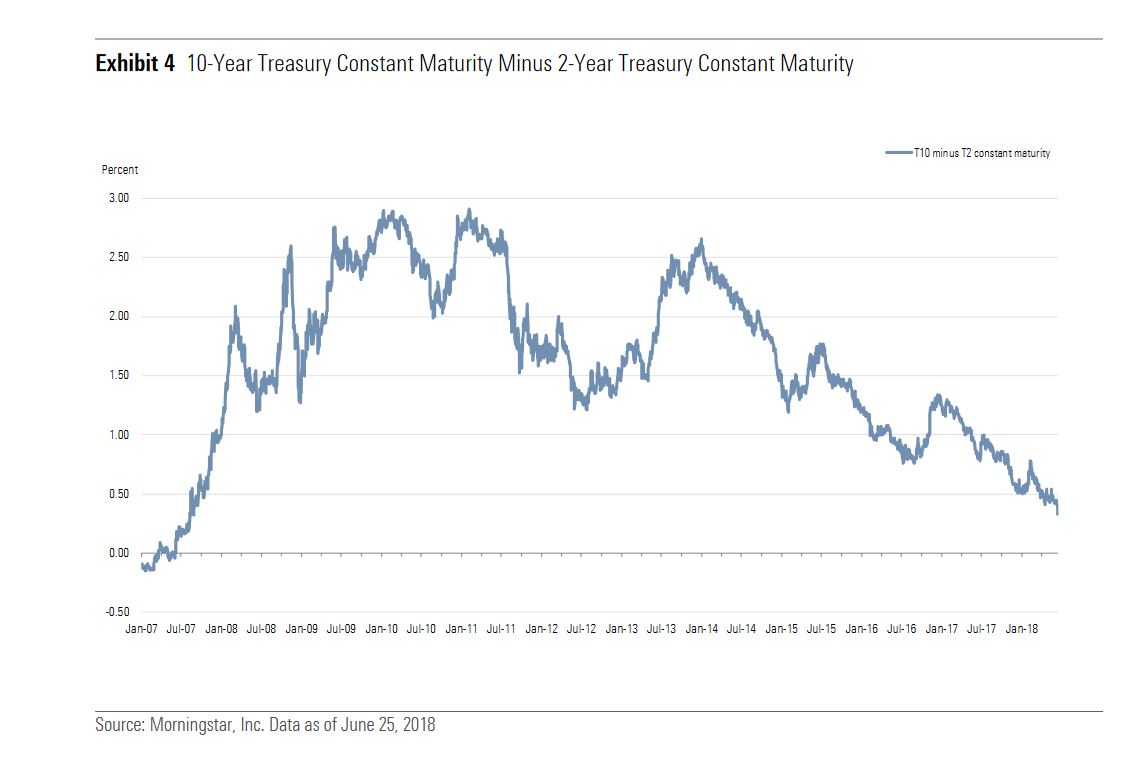© Touchpoint Markets, All Rights Reserved. Request academic re-use from www.copyright.com. All other uses, submit a request to [email protected]. For more inforrmation visit Asset & Logo Licensing.
Another Interpretation Of The Flattening Yield Curve
Morningstar believes that the flattening yield curve is not necessarily predicting an economic downturn.
Trending Stories
Events
- Real EstateGlobeSt. ELITE Women of Influence (WOI) 2025July 21, 2025 - DenverGlobeSt. Women of Influence Conference celebrates the women who drive the commercial real estate industry forward.More Information
- Real EstateGlobeSt. Multifamily Fall 2025October 15, 2025 - Los AngelesJoin the industry's top owners, investors, developers, brokers & financiers at THE MULTIFAMILY EVENT OF THE YEAR!More Information
Recommended Stories
Final Day to Nominate a Multifamily Influencer!
By Ingrid Tunberg | June 23, 2025
Submit a professional, team and/or company that helps shape the multifamily sector before the extended nomination deadline today, June 23rd!
Seeking CRE Healthcare Experts
By Ingrid Tunberg | June 11, 2025
Do you know of an accomplished professional or an impactful company in the healthcare sector? Submit a candidate for the Influencers in Healthcare 2025 recognition before the deadline on August 27!
Cook County Wrestles Over CRE Property Valuations
By Erik Sherman | March 17, 2025
Properties are undervalued, setting off conflict within the county government.
Resource Center

Report
Sponsored by TheGuarantors
2025 State of Renter Delinquency and Default
Renter default is a critical challenge. This report, based on a survey of 400+ multifamily professionals, reveals key trends, economic drivers, and mitigation gaps to help you build resilience in 2025. You'll gain insights into the root causes of renter default, the operational strains it can put on your portfolio, and strategies you can leverage to protect your investments and maintain stability.

Assessment
Sponsored by Building Engines
CRE Property Management Assessment: Your Building Operations Scorecard
How do your building operations measure up? Use this detailed scorecard to evaluate your operational approach across five key areas.

White Paper
Sponsored by TheGuarantors
5 Strategic Moves to Protect Your Multifamily NOI in 2025's Squeeze
Skyrocketing economic uncertainty means it’s essential for multifamily owners and operators to strengthen risk mitigation capabilities. Discover expert insights from industry experts, including the President of NMHC, to tackle 2025 challenges such as slower lease-ups, cost pressures, renter fraud, high reliance on concessions, and more.

 The New York Times Morningstar
The New York Times Morningstar 



